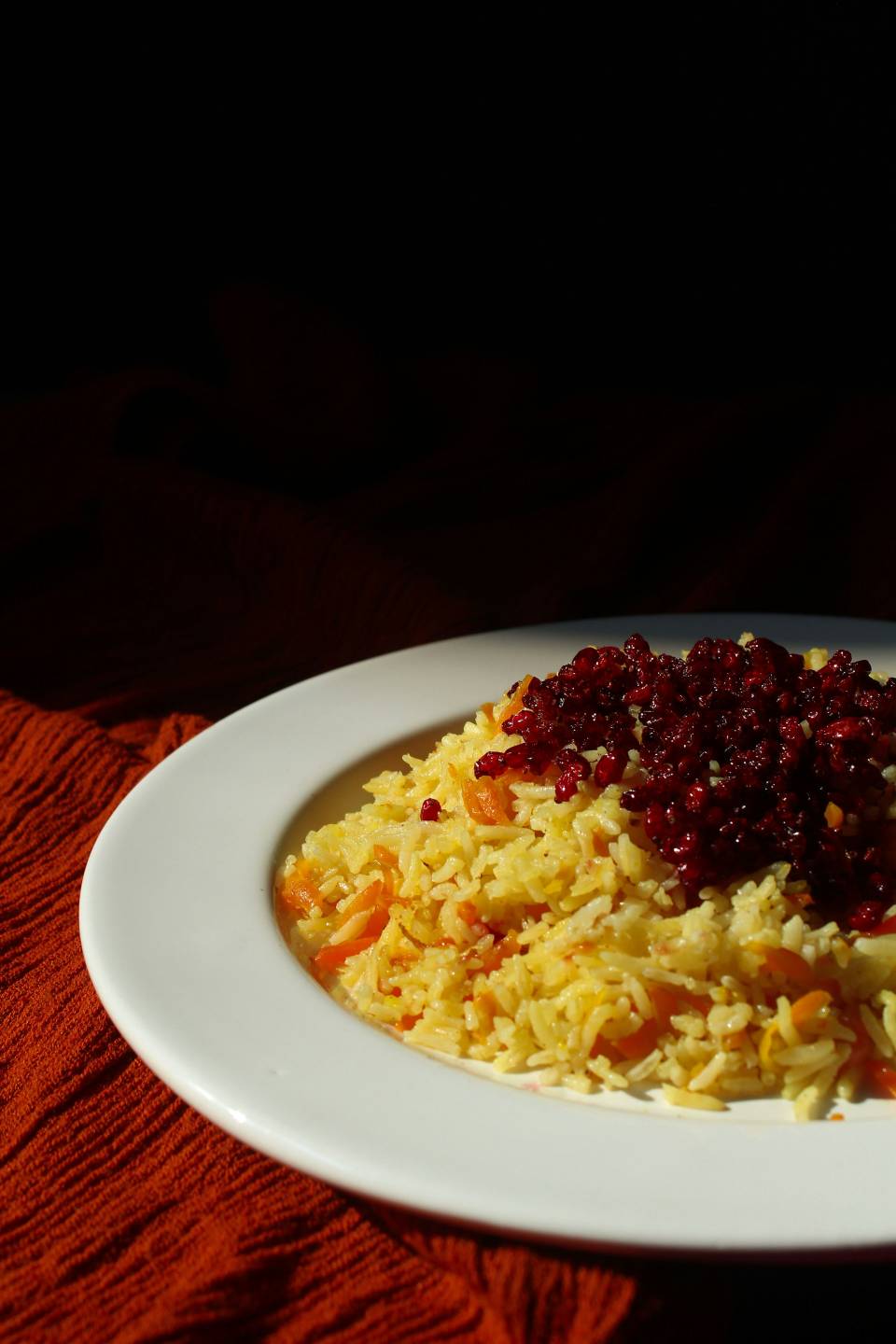Iranian rice and pilafs Some of the Iranian dishes are served during important occasions and celebrations. Rice is prepared in water, oil, salts, and saffron, while pilafs vary the rice with meat, chicken, fish, vegetables, nuts, and fruits. This article will show you how to make various kinds of Iran’s rice and pilaf.
Rice
One of the easiest and most commonly known Iranian dishes made out of plain rice that has its crispy layer of tahdig. It is a thin layer of fried rice stuck at the bottom of the pot which smells nice and tastes somewhat sour and sweet. There are various stews like Gheimeh, Ghormeh Sabzi, Fesenjan, and others that rice is always accompanied by.
First, clean your rice and boil it together with salt and a little amount of oil until it is halfway cooked. Next, ensure that you have thoroughly drained the rice before placing each layer inside the pot. Pour saffron and oil into each layer. Towards the end, put the pot cover on top of it and then cook with low heat until the rice is done and the bottom is crispy.
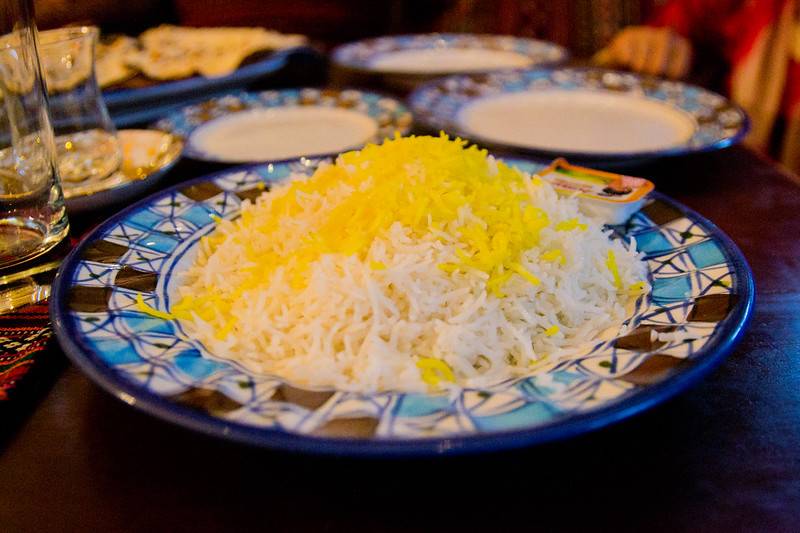
Types of pilaf
This is a mixed dish whose components are normally added to the rice grain. Many different kinds of Iranian pilaf exist, each having a unique flavoring. The next section of this article will discuss some traditional and mouth-watering pilafs from Iran.
Baghali pilaf(rice and pilafs)
Among the most preferred pilaf in Iran is baghali pilaf made using rice, fava beans, and meat or chicken. Such a pilaf is generally served in the spring and summer and they are eaten together with yogurt and salads. First of all, rinse the fava beans well and then cook them in water with a small amount of salt and a little turmeric until they are tender.
Thereafter, take a piece of meat or chicken along with onion, turmeric, salt, and pepper. # Prepare rice as we normally do, adding it to either meat or chicken. Pour saffron and oil carefully into every layer of the pot, cover it with a towel or a cloth, and put on slow fire till the pilaff is ready.
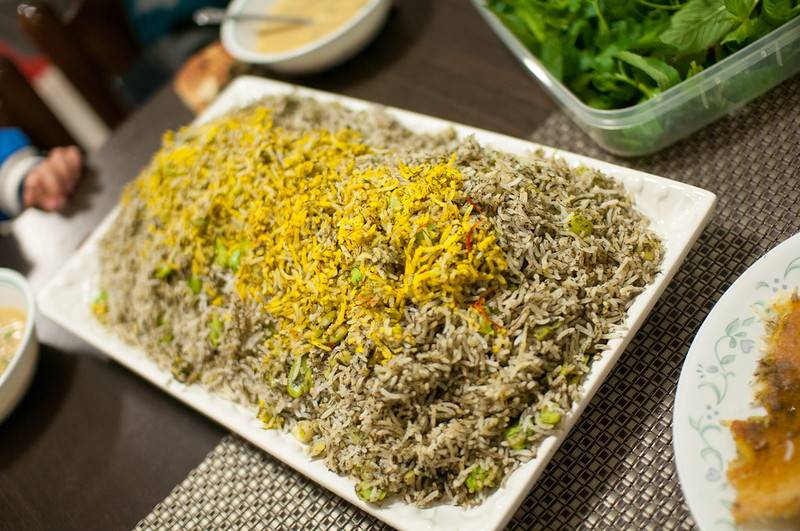
Zereshk pilaf(rice and pilafs)
One of the most beloved as well as popular pilafs of Iran is Zereshk pilaf made with a mixed combination of rice, barberries, and chicken. It is a traditional pilaf that is normally served for parties, and ceremonies and eaten together with yogurt and cucumbers. Wash zereshk and stew it in salty warm sugar water till it is sweet and sour.
The second method is preparing onions, turmeric, and a little salt and pepper and then boiling the chicken on them separately from the bones. # Cook the rice, just as you cook rice, and add the barberries into the mixture it. Pour some of the brewed saffron into one layer and add oil put a towel over the pan and put it in low heat until all the pilaf is ready. Take the chicken and brown with some oil and saffron, and then set over the pilau.
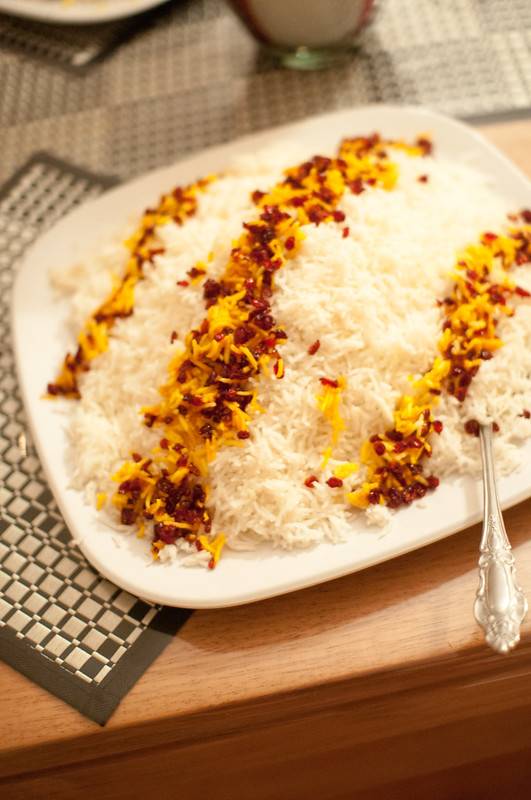
Shirin pilaf(rice and pilafs)
One of the most tasty and fragrant pilafs of Iran is called Shirin pilaf which includes a mixture of nuts, fruits, and rice. Pilaf is often considered as a dish for the new year’s day or when people are happy and is mainly taken together with chicken, fish, or fried meat.
Shirin pilaf is made by boiling the rice in water and mixing it with saffron broth and oil, prepared separately. Finally roast some nuts and fruits like walnuts, pistachios, almonds, golden raisins, dried plums, apricots, peaches, pears, pomegranates, etc. in heated vegetable oil along with sugar, cinnamon, and cardamom and keep Place the pot in towel and put on low heat ensuring the pilaf is well cooked.
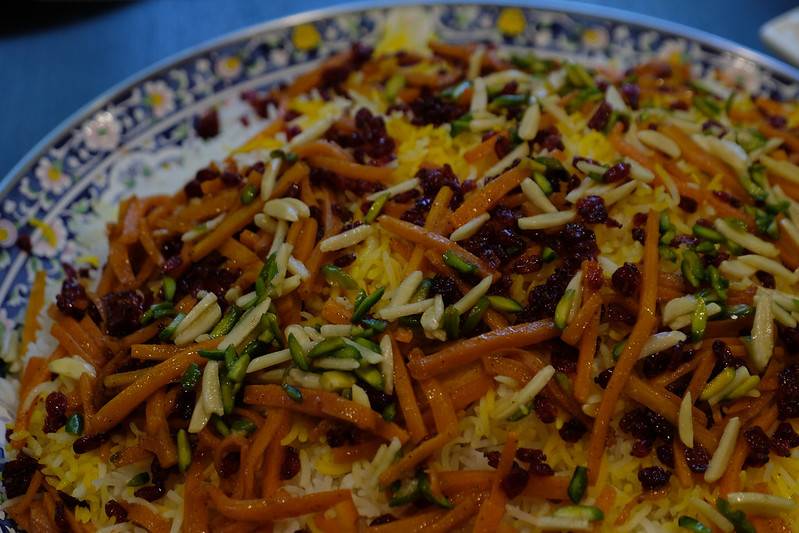
Albaloo pilaf(rice and pilafs)
One of the best and sour Iranian pilafs, “Albaloo pilaf”, is prepared with the usage of rice, sour cherries, and either meat or chicken. It’s also a special pilav that has the cherry season during consumption and is accompanied by yoghurt, with cucumber. Begin by washing the sour cherries and removing their pits to prepare albaloo pilaf.
Next add sour cherries, sugar, and some little water, and make them into syrup. Add onions, turmeric, salt, pepper, and water to cook the meat or chicken away from the bones. Cook the rice as rice and then add sour cherries, meat, or chicken. In every layer put some saffron-brewed brewing spread oil wrap the dish into a towel covered with a towel and set it on a low fire and ready.
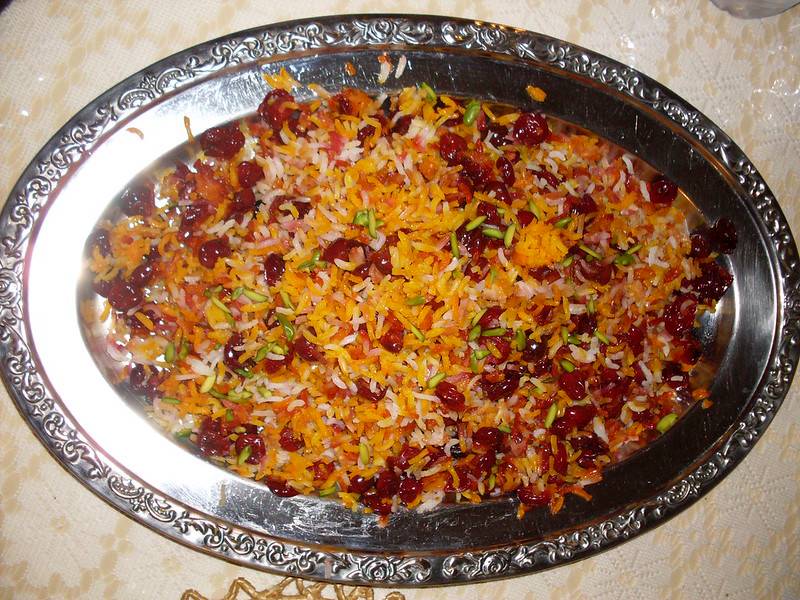
sabazi pilaf(rice and pilafs)
The healthiest and most nutritious type of Iranian pilaf is the pilaf sabzi pilaf prepared using rice mixed with vegetables and either meat or fish. Pilaf sabzi, which is often consumed for the days of New Year’s Day. To make the sabzi pilaf, wash the vegetables such as parsley, leek, fenugreek, coriander, mint, and basil then chop them.
Put the vegetables into a pan and add a little water and oil. Allow them to completely cook. Put cooked meat or fish in the same pot with onions, turmeric, salt, pepper, and a little water after separating them from the bones. Cook the rice just like rice, then add it to vegetables and meat or fish. Put some brewed saffron and oil in each layer cover the pot with a cloth and cook over low heat till the pilaff is done.
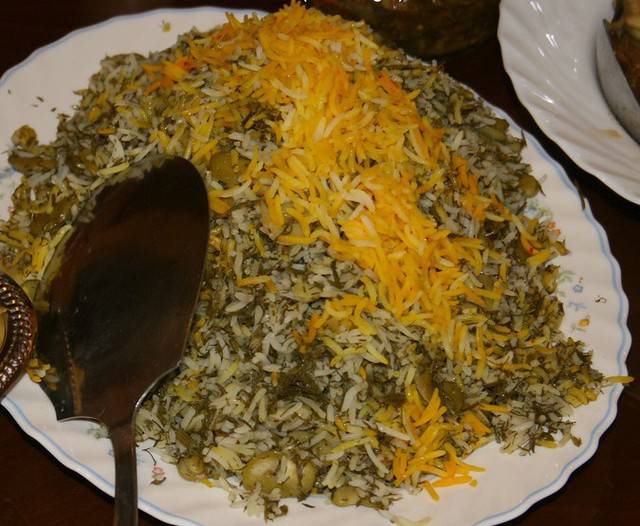
This article is finished so far. I hope you enjoyed reading it and can prepare different types of Iranian rice and pilaf with skill. If you have any questions or comments, you can share them with us in the comments section.
Frequently asked questions
• What kind of rice is suitable for preparing rice and pilafs?
To prepare rice and pilaf in Iran, it is better to use rice that has long, shiny, and thin grains and does not stick together when cooked. Rice such as tarom, domsiah, domsafid, shiroodi, samavari, sangtarash, and so on are of this type.
• How can you make the tahdig more delicious?
Tahdig is one of the most important parts of rice and pilaf of Iran, that requires enough attention. To make the tahdig more delicious, you can use the following methods:
• Before layering the rice in the pot, heat the pot with oil pour some water and saffron, and let it boil. Then layer the rice in the pot and by this method, the tahdig will be golden and shiny.
• You can use other ingredients such as bread, onion, potato, yogurt, egg, walnut, pistachio, and so on for the tahdig and change the taste and color of the tahdig.
• You can use boiling water instead of cold water for cooking rice and in this way, reduce the cooking time of rice and make the tahdig firmer.
What goes with rice and pilaf?
There is variability in rice and pilaf of Iran which uses diverse ingredients but maintains its unique flavour. In your pilaf, you may use meat, chicken, fish, vegetables, nuts, fruits, mushrooms, beans, lentils chickpeas, and others as well.
You may also serve your rice together with stew such as gheimeh, or ghorme sabzi Other additions that enhance the flavor and scent of rice and pilaf include saffron, ground turmeric, crushed cinnamon stick, powdered cardamom pods, natural or artificial rose water, fresh lemon juice, table sugar, boiled candies, etc.

